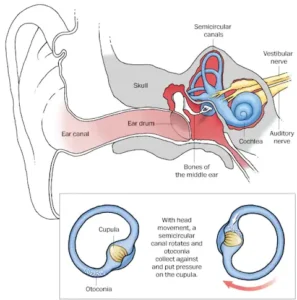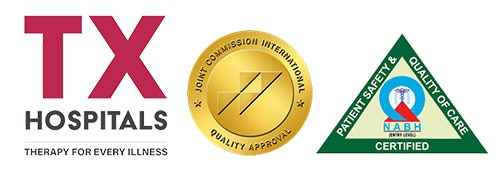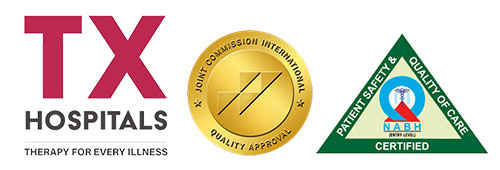Introduction
Vertigo is a sensation of spinning or dizziness that can occur due to various underlying causes. It is often described as a feeling that the person or their surroundings are moving or spinning, even when they are stationary. Vertigo can be distressing and can significantly impact a person’s balance and quality of life. It is important to identify the underlying cause of vertigo to determine the appropriate treatment approach.

Symptoms
Common symptoms associated with vertigo may include:
- Sensation of spinning or dizziness.
- Loss of balance or unsteadiness.
- Nausea or vomiting.
- Abnormal eye movements (nystagmus).
- Sweating or perspiration.
- Ringing in the ears (tinnitus).
Symptoms of vertigo may come and go, and their severity can vary depending on the underlying cause and individual factors.
Diagnosis
Diagnosing the cause of vertigo involves a thorough evaluation by a healthcare professional.
The diagnostic process may include:
Medical history: A detailed discussion about the nature of the symptoms, their onset, duration, and any triggering factors.
Physical examination: A comprehensive examination, including assessment of balance, coordination, and eye movements.
Vestibular function tests: These tests evaluate the functioning of the inner ear and vestibular system, which plays a crucial role in maintaining balance.
Imaging tests: Magnetic resonance imaging (MRI) or computed tomography (CT) scans may be ordered to assess the structures of the inner ear and rule out other underlying causes.
Treatment
Treatment for vertigo depends on the underlying cause and may include:
Canalith repositioning maneuvers: These are specific head and body movements performed under the guidance of a healthcare professional to reposition displaced crystals in the inner ear, which can alleviate vertigo associated with benign paroxysmal positional vertigo (BPPV).
Medications
Medications such as vestibular suppressants, anti-nausea drugs, or medications to treat underlying conditions may be prescribed to manage vertigo symptoms.
Physical therapy: Vestibular rehabilitation therapy, conducted by a trained physical therapist, can help improve balance and reduce symptoms of vertigo through exercises and maneuvers that promote compensation and adaptation.
Surgery or procedures: In some cases, surgical interventions or procedures may be necessary, especially for specific causes of vertigo that do not respond to conservative treatments.
Life style Changes
In addition to medical treatments, certain lifestyle changes may help manage vertigo symptoms and reduce the frequency or severity of episodes:
Avoid triggering factors: Identify and avoid situations or stimuli that worsen vertigo, such as sudden head movements, bright lights, or certain foods.
Modify daily activities: Take precautions to prevent falls or accidents during episodes of vertigo, such as using handrails, keeping the home well-lit, and avoiding heights or hazardous environments.
Stress management: Implement stress-reduction techniques, such as relaxation exercises, deep breathing, or engaging in activities that promote relaxation and mental well-being.
Stay hydrated: Maintaining proper hydration can help regulate the fluid balance in the body, which may contribute to vertigo management.
Limit alcohol and caffeine: Alcohol and caffeine consumption can potentially worsen vertigo symptoms, so it may be beneficial to limit or avoid them.
Get enough rest: Prioritize adequate sleep and rest, as fatigue and sleep deprivation can potentially exacerbate vertigo symptoms.
It’s important to consult with a healthcare professional for an accurate diagnosis, personalized treatment plan, and guidance on lifestyle modifications to manage vertigo effectively.







